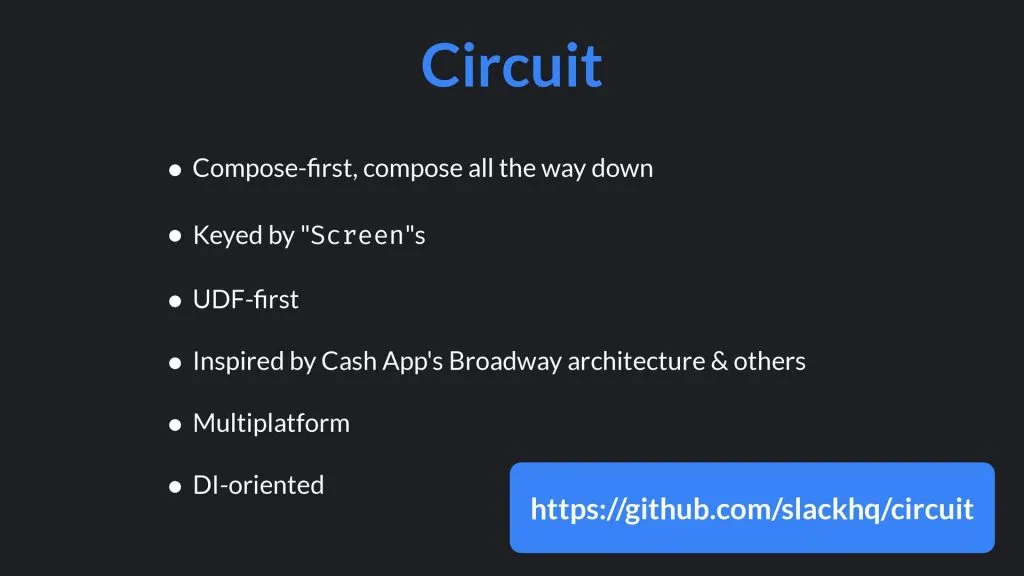As the Android ecosystem evolves, developers are continuously seeking efficient ways to build and architect modern, scalable, and maintainable applications. One approach gaining traction is the adoption of a Compose-driven architecture, which leverages Jetpack Compose, the declarative UI toolkit introduced by Google.
Understanding Compose-Driven Architecture
Compose-driven architecture is centered around Jetpack Compose, a powerful UI toolkit that enables developers to build responsive and flexible user interfaces. It emphasizes the use of declarative programming, allowing developers to describe the UI state and behavior using a concise and intuitive syntax. Compose-driven architecture promotes modularity, reusability, and testability by breaking down the UI into smaller, composable components. These components can be combined and composed to build complex UI screens, providing a more efficient and maintainable development experience.
The Role Of Circuit

Circuit is an open-source library and framework that complements Compose-driven architecture by providing additional tools and patterns. These circuits offer ready-to-use solutions for common challenges in building Android applications, such as state management, navigation, dependency injection, and data fetching. Circuit enables developers to follow best practices and leverage pre-built components, saving time and effort in developing the core infrastructure of the application. Additionally, they foster a collaborative and supportive community, enabling developers to learn from and contribute to shared knowledge.
Benefits Of Compose-Driven Architecture With Circuit
Increased Productivity And Development Efficiency
Compose-driven architecture, coupled with open-source circuits, boosts developer productivity by providing a modular and reusable approach. Composable UI components and pre-built circuit libraries enable faster development and reduce boilerplate code. The declarative nature of Compose simplifies UI updates, while open-source circuits handle complex tasks, freeing up developers to focus on business logic and unique features.
Improved Testability And Maintainability
Compose-driven architecture promotes testability by separating UI logic from business logic. With smaller and composable components, unit testing becomes more straightforward. Open-source circuits often provide testing utilities and patterns, enabling developers to write comprehensive tests for UI components and application logic. This approach results in more stable, maintainable, and bug-resistant codebases.
Implementation Techniques
Modularization And Separation Of Concerns
Compose-driven architecture encourages modularization and separation of concerns. Divide the application into modules based on features or layers, such as presentation, domain, and data. Each module can encapsulate its UI components, business logic, and data management, ensuring a clear separation of responsibilities and promoting code organization.
Leveraging Open-Source Circuits
Identify the key architectural concerns in your application and explore relevant open-source circuits. Integrate these circuits into your project using dependency management tools like Gradle. Follow the provided documentation and examples to adopt the circuit’s patterns and utilities within your Compose-driven architecture.
Composable UI Components
Break down your UI into small, reusable, and self-contained composable components. Circuit’s UI and State concepts make it simple to define, test and preview your UI’s composable functions. Your UI will send CircuitEvents back to the Presenter, which then updates the CircuitState. This circular loop completes the “Circuit” and makes for an easy to follow and intuitive architecture.
Closing Thoughts
By utilizing the power of Compose-driven architecture with Circuit, developers can build scalable, maintainable, and efficient Android applications. This approach offers benefits like increased productivity, improved testability, and flexibility. Leveraging modularization, separation of concerns, and pre-built Circuit libraries, developers can focus on delivering high-quality features while adhering to best practices. Embrace Compose-driven architecture with open-source circuits to elevate your Android development experience and create exceptional applications.